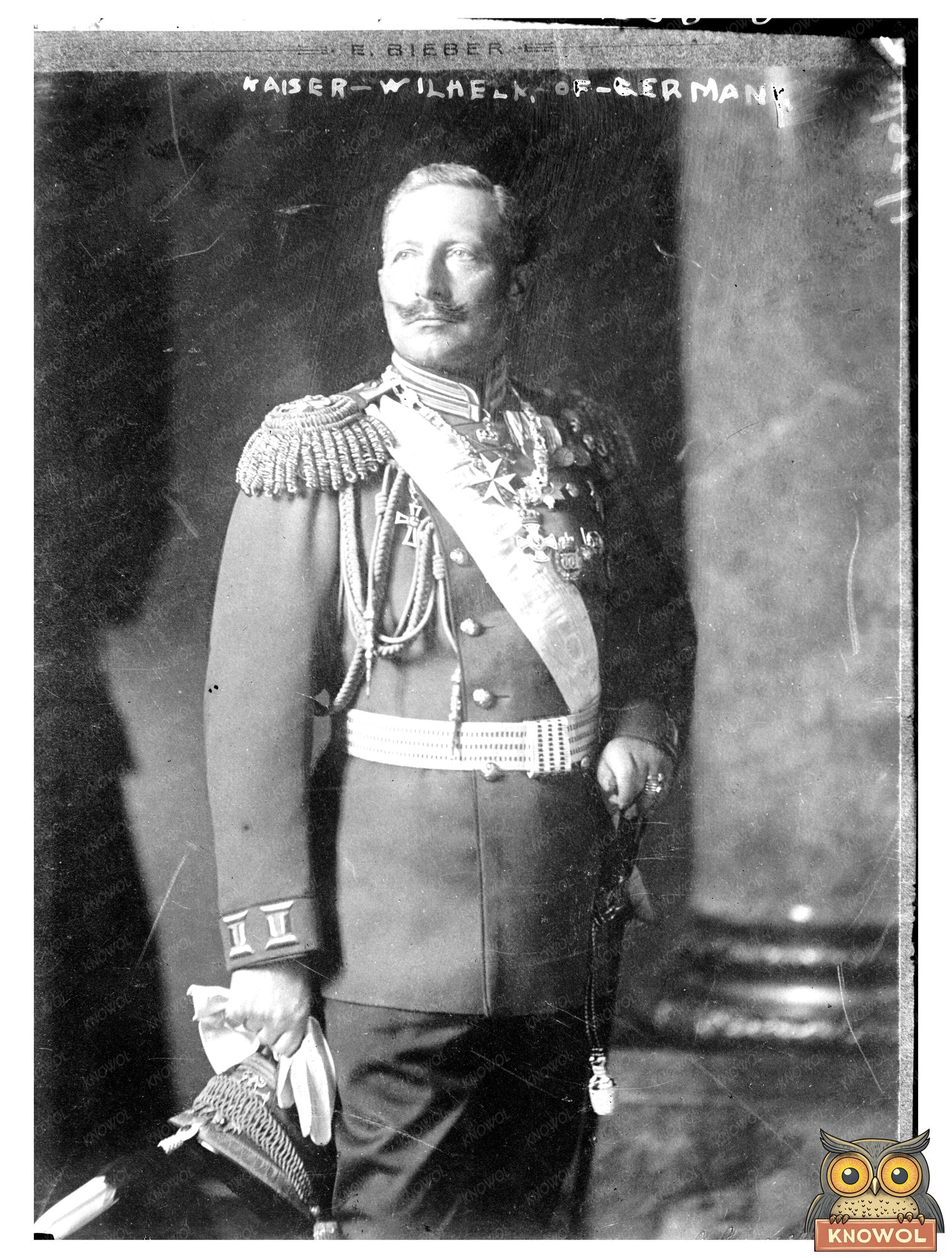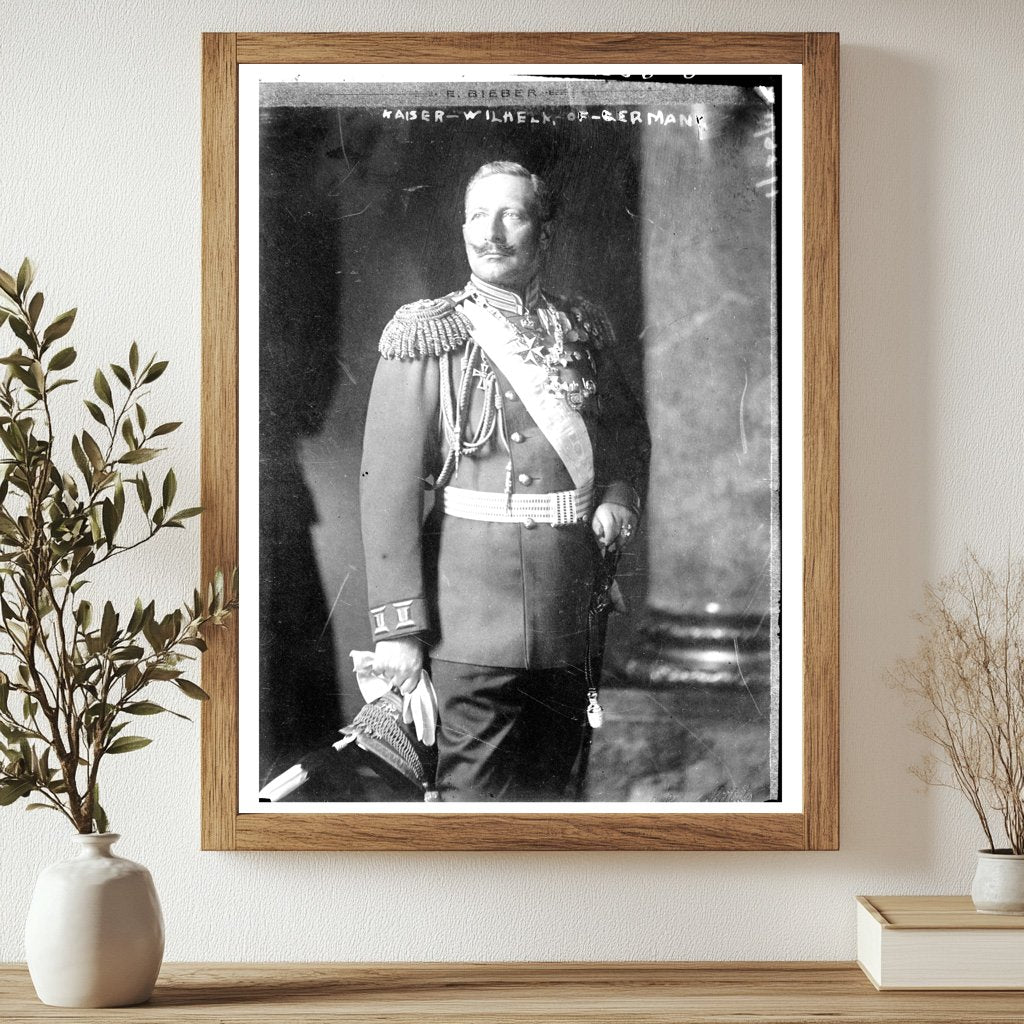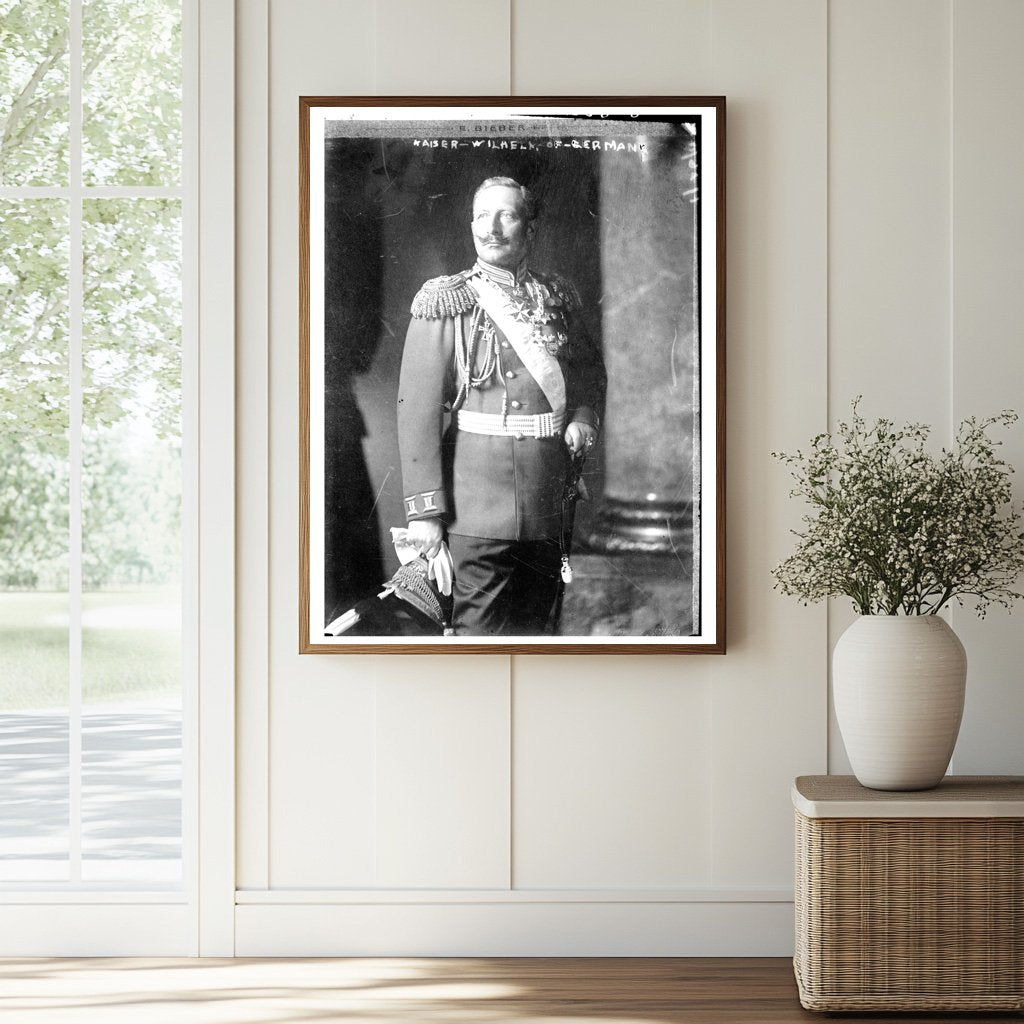


Imperial Portrait of Kaiser Wilhelm II, Germany
This historical photograph features Kaiser Wilhelm II of Germany, a pivotal figure in European history during the late 19th and early 20th centuries. He was the last German Emperor and King of Prussia, reigning from 1888 until his abdication in 1918. His rule saw significant military buildup and a push for a powerful imperial presence, which contributed to tensions among European nations leading up to World War I.
Taken during a period when Wilhelm was known for his eccentric personality and bold aspirations for Germany, the photograph captures him in a moment that reflects his status as a military leader. His reign was marked by a mix of modernization within Germany and aggressive foreign policies, which ultimately contributed to the outbreak of World War I. His firing of Otto von Bismarck, the architect of German unification, and his pursuit of a place in the sun illustrated his desire for increased German influence on the world stage, impacting not only Germany but also the broader geopolitical landscape of Europe.
Kaiser Wilhelms legacy is complicated, marked by his initial popularity followed by deep unpopularity as the war progressed. By the end of World War I, widespread dissatisfaction with his leadership and the military defeats led to his abdication and exile. This photograph serves as a reminder of a tumultuous era in German and world history, encapsulating the personality and ambition of a leader whose vision would ultimately lead to profound consequences for his country and beyond.

Imperial Portrait of Kaiser Wilhelm II, Germany
